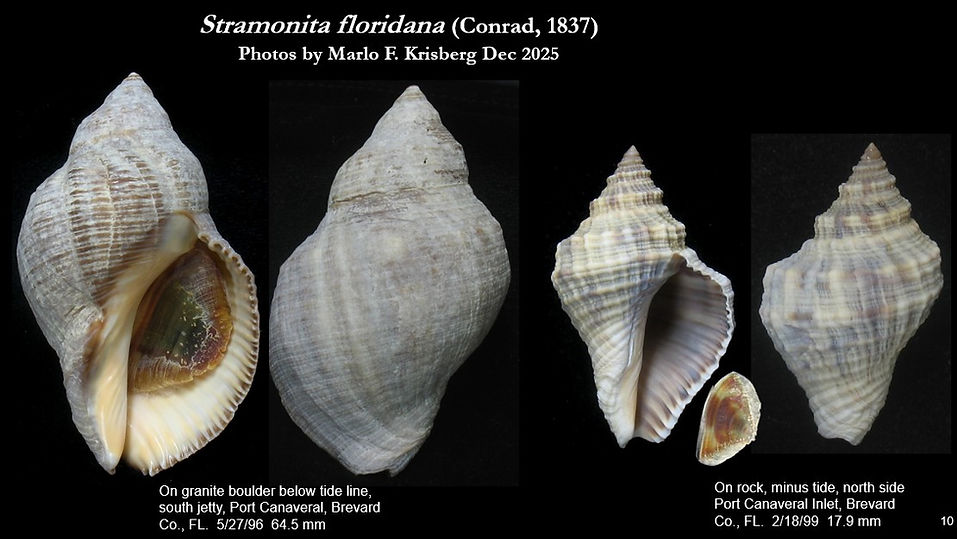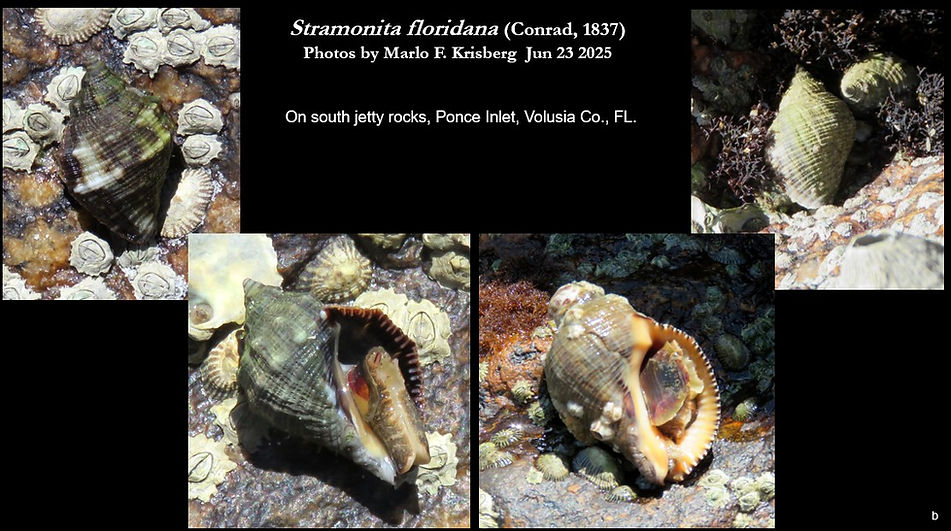Ref: Claremont, M., Williams, S. T., Barraclough, T. G., and Reid, D. G. 2011. The geographic scale of speciation in a marine snail with high dispersal potential. Journal of Biogeography U. Biogeogr. 38: 1016-1032.
WoRMS (Nov 2025) recognizes ten species of Stramonita. One (S. buchecki) is unlikely to be a valid species. Six have distributions that do not include Florida. One of the six (S. haemastoma) was long, and still is in many publications and online sites, considered to be the comprehensive species name for a complex of species occurring in Europe and the western Atlantic. However, based upon several molecular studies WoRMS has replaced the species named S. haemastoma for the Stramonita found in Florida waters with three species elevated from subspecies status to full species status; S. canaliculata, S. floridana, and S. rustica. While molecular studies have validated that S. canaliculata and S. floridana are separate species, so far (as of Nov 2025) no one has come up with a definitive way to distinguish the two morphologically or based upon location.




























